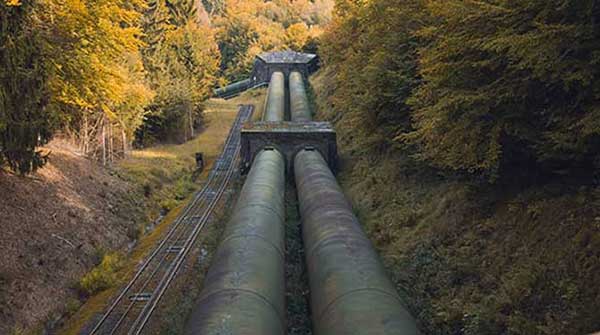- Pipeline politics or industry insensitivity?
- Bending pipe to fit the Dene culture
- Building informed consent for a mega-project

I remember waking up in the small log cabin I had been given as lodgings on my first trip to Fort Good Hope to explain the route selection process of the Polar Gas Pipeline.
There was a small stove close to my bed, and a stack of dry wood and kindling for heat. Outside it was cold and still, and I could just make out the pathway up to a small community cafe where I planned to eat my breakfast.
My presentation the night before had been embarrassing and rather than call my boss in Toronto, I simply decided to fly there as planned that day.
I took a local charter to Norman Wells, and then flew via Yellowknife and Edmonton to Calgary. After a Saturday with my young family, I jetted to Toronto on Sunday afternoon. I checked in at the elegant and expensive King Edward Hotel (booked by my boss’s secretary), where every night your bed sheets were turned down and a large chocolate was placed on your pillow.
I met with my boss, the Polar Gas CEO, and the vice-president of engineering first thing Monday morning. I told them how our route selection process and plan had been received, and noticed that both were genuinely surprised. They had assumed that safety, engineering excellence and cost efficiencies would travel well as route selection criteria in the Sahtu Region of the Northwest Territories.
I was straightforward in my assessment of what we needed to do: “We need to deal directly with the concerns articulated by Chief Antoine Mountain if we want to build a pipeline down the Mackenzie River valley to Alberta.”
The engineering VP quickly saw the concern in our CEO’s eyes. He said he would assemble his design team immediately and start assessing new options for river barge landings, gravel borrows, work camp locations and turbine sites, especially those near the Dene communities. He also committed to moving the line further away from Fort Good Hope.
I agreed to brief his pipeline designers and carry back the results as soon as possible to the Sahtu. I also told my superiors that I needed help.
The VP said he would hire a pipeline engineer to travel with me and explain technical matters.
I said I also needed Indigenous policy expertise immediately.
As the meeting wrapped up, my boss smiled and asked if I was available for lunch at the Ontario Club?
“Of course,” I said. Thank god I was wearing a suit and tie.
Lunch was always a formal occasion with him, but this time he opened up. He thanked me for being direct and culturally sensitive in my analysis. He said that at the appropriate time, he would come north and meet with the political leaders of the Dene and Metis who I was forming relationships with.
He also approved my hiring a top-notch Indigenous consultant to join our team.
That afternoon I briefed the engineering design staff, and with them allowed myself to be a bit more loose and critical about our dilemma.
I privately thought that if no change was forthcoming from them, I was leaving Polar Gas. To their credit, however, they were remarkably prescient about various design options. In fact, it almost seemed they had already sensed the potential criticism on their first route design.
Two weeks later, the engineering VP called to tell me that a dossier was on its way containing a variety of design options to deal with the Dene concerns and a senior pipeline engineer had been retained to travel with me to all meetings.
I was also told that hundreds of Polar Gas toques and Bic pens had been purchased to hand out at my negotiations. I had a very strong sense we were moving simultaneously forward and back.
But I also had an excellent candidate in mind to assist me.
Mike Robinson has been CEO of three Canadian NGOs: the Arctic Institute of North America, the Glenbow Museum and the Bill Reid Gallery. Mike has chaired the national boards of Friends of the Earth, the David Suzuki Foundation, and the Canadian Parks and Wilderness Society. In 2004, he became a Member of the Order of Canada.
The views, opinions and positions expressed by columnists and contributors are the author’s alone. They do not inherently or expressly reflect the views, opinions and/or positions of our publication.
